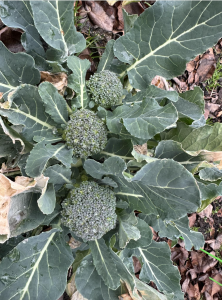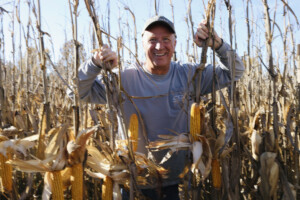What are farmers doing during these cold winter days? If they farm in the Midwest, they may be laying tile. I realize this may be a foreign concept to my friends in the west, but in many areas of the Corn Belt, you must often move water out of your fields. In heavier soils, excessive rainwater can remain on the soil surface or within the upper profile. This excessive moisture can delay planting in the spring and give existing crop stands wet feet. Oversaturated soil can deprive roots of oxygen and dramatically reduce yields. Excessive surface water can also cause soil erosion. On the farm I grew up on in Illinois, the homesteaders had dug 3-4’ deep trenches by hand to lay a series of cylindrical clay tile sections end-to-end (talk about tough people doing hard work!). Much of this tile was still in use when I farmed in the early 2000s. Around the 1940s, the invention of perforated plastic tubing made the process easier. Soon, backhoe loaders dug the trenches, and large rolls of plastic tubing were laid below the ground. Much like farmers, whose focused eyes and steady hands performed the art of planting straight rows, excavating contractors had a knack for knowing slope and pitch and digging a straight trench. Nowadays, a pattern-style approach utilizes special tiling rigs equipped with GPS-guidance and mapping software to dig and lay the tile. Costs for this practice can run over $1,000 per acre. However, the investment can significantly improve yields and land values. Like many farmers, I had the cell phone number of a backhoe operator on speed dial, in case I came across any busted tile lines that needed repairing while working the fields. Surface drainage is also an issue in many Midwestern fields. During heavy rainstorms, you may see small creeks form throughout the field, carrying valuable topsoil with it. These areas are best managed by planting grass waterways. As the name implies, you sow perennial grasses in these depressions that when established, efficiently channel water to preserve topsoil. This is a major soil conservation practice. We’d mow the lush grass in our waterways and bale it for cattle feed.
Yesterday was Abraham Lincoln’s birthday. Famously known for working as a rail splitter before entering politics, Honest Abe also spent his youth as a frontier farmer, growing crops on his family farms as they migrated across Kentucky, Indiana and Illinois. As the 16th President of the United States, he not only transformed the face of our nation, but that of agriculture. Lincoln established the United States Department of Agriculture (USDA) in 1862, bringing to life his vision of “putting the soil to the top of its capacity – producing the largest crop possible from a given quantity of ground.” His commitment to improving ag research and education included the Morrill Act that established land-grant universities, setting aside public lands to teach agriculture and mechanical arts. His Homestead Act opened western migration by providing 160 acres of the public domain to any American or prospective citizen who was the head of a family or over 21 years of age. These homesteaders gained ownership of the property after residing on it for five years and making improvements on it. In Lincoln’s words: “No other human occupation opens so wide a field for the profitable and agreeable combination of labor with cultivated thought, as agriculture.”
Over 108,000 visitors (Huma’s Doug Greer, Nick Cardona and Davin Smith being among them) are expected to attend the World Ag Expo this week in Tulare, California. Representatives from 56 countries will represent nearly every sector of the industry. Huma will be displaying a booth at the show.
Broccoli, a perennial crop? You’ll be hard pressed to convince me otherwise. I planted the versatile veggie last fall and picked several tasty spears on January 14. A day later, we began a multi-day span of single-digit temperatures with six inches of snow. This weekend, I plucked several quality spears from my plants.

Country music superstar Lainey Wilson won a Grammy award last week. During her acceptance speech on the music industry’s biggest stage, she proclaimed, “I’m a fifth-generation farmer’s daughter and I would consider myself a farmer too… sometimes when you find the right farming community you can have a harvest of a lifetime.” Spoken not like a typical celebrity, but like a typical farmer.
Related Posts

This Week in Ag #20
Wheat harvest is well underway throughout the country. Each morning, the harvest process begins with equipment maintenance. Most farmers and custom cutters will park their fleet in a row, or in close proximity, so they can readily perform daily service. This involves the grease gun. Combines have hundreds of moving parts. Some of the most key

This Week in Ag #11
You shouldn’t judge a book by its cover, but you can judge seed products by their bag covers. There’s lots of telling information on them. Just look at this bag of seeds going on my farm. The bag itself prominently features the brand name and logo (AgriGold), type of product (corn), the actual product name (A647-79VT2PRO) and

This Week in Ag #31
#Harvest23 is here! If all goes well, I should be harvesting my corn plot this week. The beginning of fall brings excitement and optimism to the farm. But this year, those feelings appear tempered. Farmer sentiment dropped 8 points last month (according to the Purdue Ag Economy Barometer) as producers shared a dimming view of

